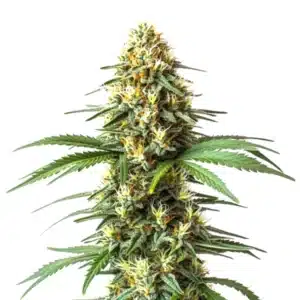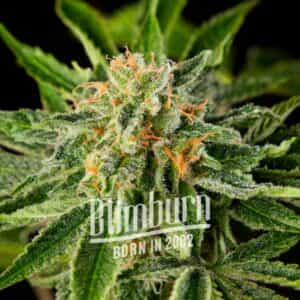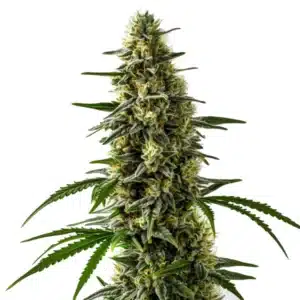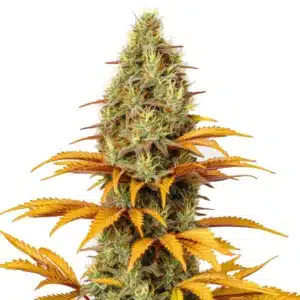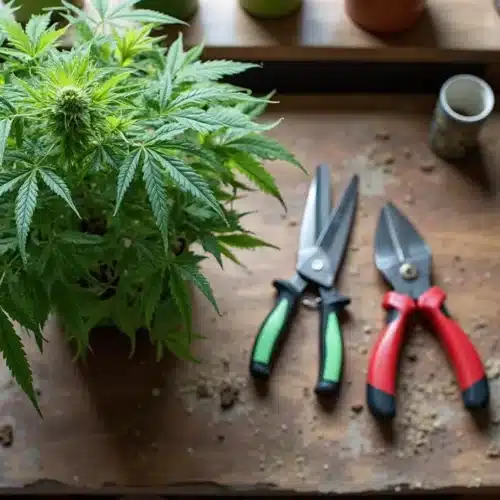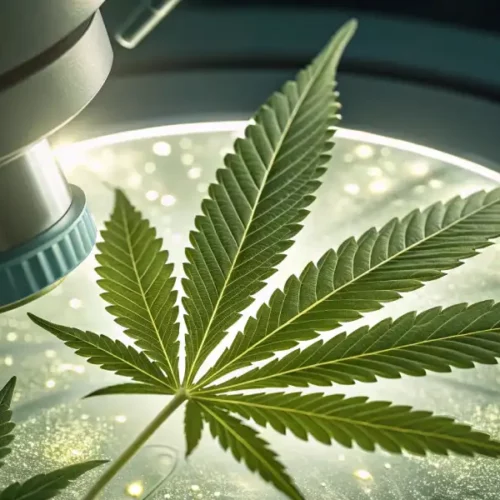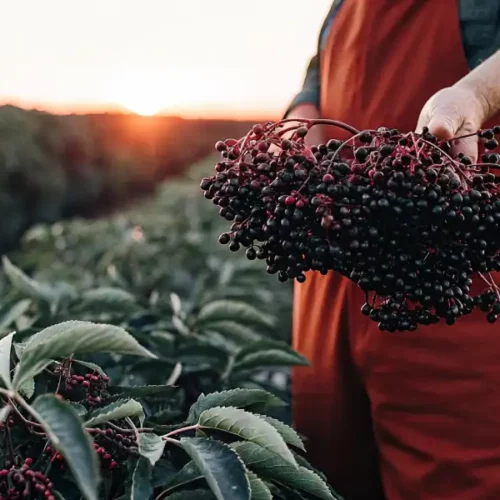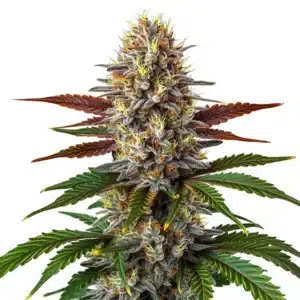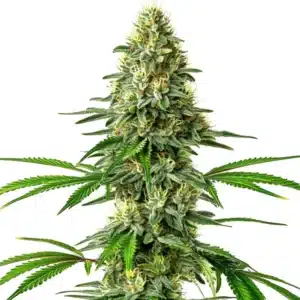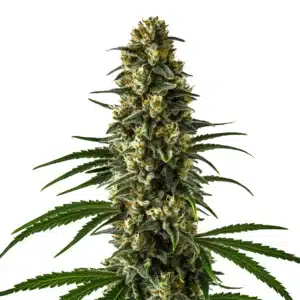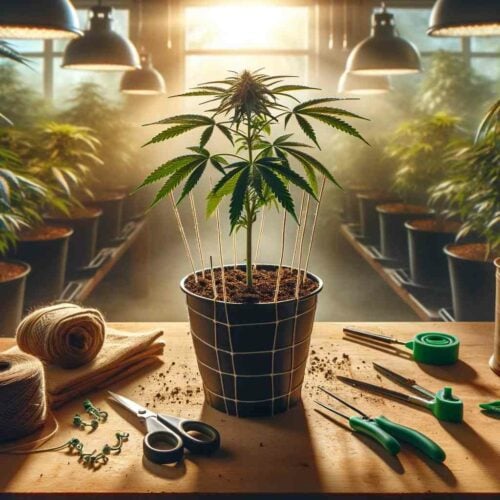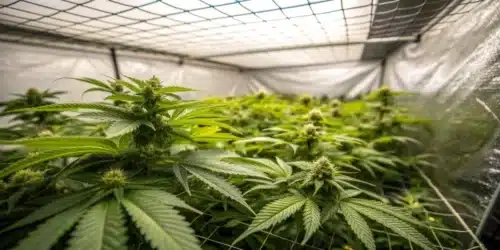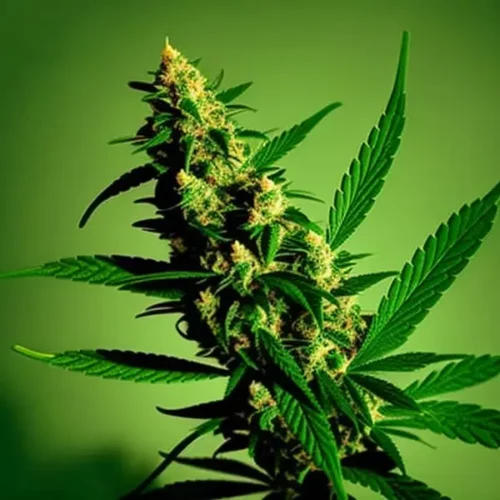Cannabis is a robust and adaptable plant that can be cultivated both indoors and outdoors and has been used for medicinal and recreational purposes for thousands of years. To grow a healthy and productive cannabis plant, the key factors affecting its growth is crucial. In this guide, we will discuss essential aspects of cannabis plant care, including creating the optimal growing environment, providing proper nutrition, and ensuring adequate water and light.
The growing environment is critical for the health and development of a cannabis plant. For the best results, cannabis should be grown in a controlled setting where temperature, humidity, and air circulation can be managed. This approach helps to prevent issues such as mold and pests that could negatively impact the plant and its yield. When cultivating cannabis outdoors, select a location sheltered from strong winds and excessive sunlight. Additionally, ensure the soil has good drainage and a balanced pH level for optimal plant health.
4 Fundamental Factors To Care Cannabis Plant
At this point we are going to analyze 4 fundamental factors for the care of strong and healthy cannabis plants. Each of the factors set out below are the main pillars to achieve success in the crop you have. Finally, pay attention to each of the details that we give you below.
How to Care For a Cannabis Plant – Lighting
Indoor cannabis cultivation often involves adjusting light intensity and spectrum before harvest. In the initial week of the flowering stage, Jushi begins with LED light intensity set at 700 micromoles (a unit measuring light brightness).
By the third week of flowering, the lights are repositioned approximately 10 to 12 inches closer to the plant canopy, increasing light intensity to between 1,000 and 1,400 micromoles, according to a expert master grower.
This heightened light intensity is maintained until the final week of flowering, when it is reduced back to 700 micromoles. This adjustment helps lower the canopy temperature slightly and prevents terpene loss towards the end of the flowering cycle.
Additionally, some growers prefer to introduce extra red light to their plants. By incorporating a few minutes of red-spectrum light each day, cultivators can extend the typical 12-hour light and 12-hour dark cycle to around 13 hours of light and 11 hours of darkness. This extra light is believed to enhance yields and improve the cannabinoid and terpene profiles of the plants.
How to Care For a Cannabis Plant – Managing Heat and Humidity
As harvest time approaches, it’s beneficial to lower the temperature and humidity levels to start drying out the cannabis plants. Reducing moisture helps preserve terpenes and prevents microbial contamination, which is more likely later in the flowering phase when plants are large and nearing full maturity.
Lower temperatures in the grow room during the final stages of flowering can enhance flower quality by simulating the cooler fall temperatures. This process helps the buds to tighten up, become denser, and improve overall quality.
However, it’s crucial to avoid excessively cold temperatures, as this can create conditions that encourage mold and pathogenic growth. To balance this, aim for temperatures around 72°F and humidity levels between 40% and 45% towards the end of the flowering phase.
For example, some growers adjust temperatures from the 70s in the first few weeks of flowering to the 70s as harvest approaches. This change can improve the production of anthocyanins, pigments that give some cannabis varieties their purple and red hues.
Likewise, other weed breeders maintain a temperature range of 78-82°F in the first weeks of flowering, and then lower those temperatures to 68-70°F in the more advanced stages of flowering, around week seven or eight. This can be very positive because lower temperatures and reduced humidity help keep microbial levels in check and prevent terpene loss.
There are some more extreme cases where temperatures are gradually reduced to about 60°F and humidity to 50% at harvest time. This adjustment, which can begin a few days to a couple of weeks before harvest, helps to effectively manage flower moisture levels.
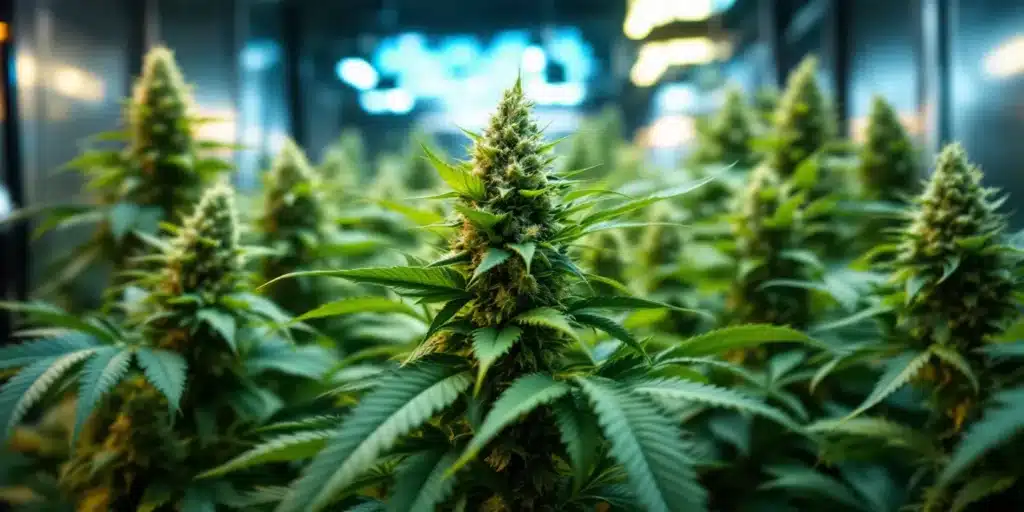
How to Care For a Cannabis Plant – Nutrients: A Key Factor in Cannabis Plant Care as Harvest Approaches
As harvest time approaches, adjusting nutrient levels becomes crucial for cannabis cultivators. Some growers estimate that the crucial change in nutrient management during harvest is to reduce certain inputs and potentially increase others. Nitrogen is the most critical nutrient affecting plant growth at any stage.
They even estimate that if nitrogen levels are not reduced, the plant may continue to focus on vegetative growth, expanding its size or diverting energy to produce more foliage. Growers typically begin to decrease nitrogen around the midpoint of the flowering phase to prepare for harvest. This shift ensures that the plant’s energy is concentrated on key areas such as bud development, resin production, and cannabinoid synthesis.
This is when we adjust the overall nutrient balance by decreasing nitrogen and increasing phosphorus and potassium. The three primary nutrients are Nitrogen (N), Phosphorus (P), and Potassium (K). By lowering N, we boost P and K levels.
Reducing nitrogen too early might lead to premature leaf deterioration, increasing the risk of microbial or fungal issues. Optimizing nutrient levels is essential for maximizing cannabis plant health and yield at harvest.
How to Care For a Cannabis Plant – Watering and Flushing for Cannabis Plants: A Key Pre-Harvest Guide
Proper care for a cannabis plant involves more than just routine watering—it includes flushing the plant to remove excess nutrients. Flushing is typically done in the final week or days before harvest, as nutrients can negatively impact the flavor and burn quality of the cannabis.
It is evident that most nutrient plans naturally reduce nitrogen as the crop cycle progresses, but a strong flush (using pH-adjusted reverse osmosis (RO) water or pH-adjusted city water) is essential to obtain optimal results. However, he and other experts advise against reducing nitrogen intake too early.
Stopping nutrient supply prematurely can lead to rapid plant decline, causing issues like natural senescence of flowers and leaves and increased risk of detritus. Therefore, it’s crucial to maintain nutrient levels until close to harvest and only reduce them in the final three to five days.
Monitoring moisture content as harvest approaches is vital. Older plants require less water and may not drink at the same rate. Jushi uses sensors in their rockwool and coco cubes connected to fertigation systems to track moisture levels. In less advanced setups, handheld moisture meters help determine the appropriate amount of water reduction.
It is important to avoid overwatering during the last few weeks to avoid complications due to redness. Striking a balance is key, as excessive humidity can stress the plant and cause additional problems. The importance of not washing too aggressively, which can diminish the aroma and color of the flower. Proper nutrient management throughout the plant’s life cycle minimizes the need for heavy flushing, helping to maintain overall plant health and quality.
Promos & Deals
Maximizing Yield and Quality in Cannabis Cultivation: Essential Tips
To optimize the yield and quality of your cannabis plant, effective management of pests and diseases is crucial. Infestations and infections can severely damage your plant and diminish its yield. Key pests and diseases to watch for include spider mites, aphids, powdery mildew, and root rot.
To prevent and address these issues, cannabis growers should implement several strategies. Utilizing natural or organic pesticides, maintaining a clean and clutter-free growing environment, and preventing plant overcrowding are vital steps. Regular inspections will also help catch problems early before they escalate.
Beyond pest and disease management, ensuring safety while growing cannabis is important. Handling pesticides and fertilizers requires adherence to safety protocols to protect your health. Always follow safety guidelines when using these substances.
Additionally, it is essential to follow local laws and regulations concerning cannabis cultivation. In some regions, growing cannabis is allowed for personal or medicinal purposes, while in others, it may be restricted or prohibited. Staying informed and complying with these rules will help you cultivate your cannabis plant legally and avoid any potential legal complications.

How to Care for a Cannabis Plant: Preventing and Managing Common Pests
To maintain a pest-free cannabis cultivation setup, prevention is key. Ensuring that pests never become a problem in the first place is the easiest and most effective strategy. Key factors in pest prevention include proper operation setup and regular maintenance. Although preventative measures might seem cumbersome initially, they will save you significant trouble and stress in the future.
Cannabis growers may encounter various pests depending on factors such as location, the size of the operation, and the growing season. Some pests are especially notorious in cannabis cultivation. Here are a few common ones and tips on how to prevent and address them:
1. Whiteflies: These are small, winged insects that can reproduce quickly. To prevent whiteflies, maintain good air circulation around your plants and regularly inspect them for signs of infestation. Use sticky traps to catch any adult whiteflies early. If an infestation occurs, consider introducing natural predators like ladybugs or using insecticidal soap.
2. Fungus Gnats: These tiny flies are attracted to moist environments. To manage fungus gnats, avoid overwatering your plants and allow the soil to dry out between watering. Yellow sticky traps can help monitor and reduce the adult population. If you already have an infestation, use beneficial nematodes or insecticidal soil drenches to target larvae in the soil.
3. Aphids: These small insects vary in color and size and can affect your plants by feeding on their sap. Regularly inspect the undersides of leaves and use neem oil or insecticidal soap to control aphids. You can also introduce aphid predators, such as lacewings or parasitic wasps, to help manage populations.
4. Spider Mites: Known for spinning fine webs on the undersides of leaves, spider mites are tiny and hard to see. To prevent spider mites, keep the humidity around your plants relatively high, as mites prefer dry conditions. Regularly check for webbing and use a strong stream of water to dislodge them from your plants. Insecticidal soap or miticides can also be effective in managing these pests.
Essential tips to avoid stress and ensure healthy growth
To effectively care for a cannabis plant, it is crucial to minimize stress, as it can negatively impact its health and development. Stress can lead to several issues, including:
Reduced Yield: Stress can lower flower production, decreasing the overall yield of the plant. This happens because the plant redirects resources towards recovery rather than producing cannabinoids and terpenes.
Product Quality: Stress can affect the quality of trichomes, the glands responsible for producing cannabinoids and terpenes. Poor trichome development can diminish both the potency and flavor of the cannabis.
Health Issues: Stressed plants are more susceptible to diseases and pests due to weakened immune systems.
Growth and Development: Stress can slow down growth and cause problems such as yellowing leaves, deformities, and other symptoms that impair overall development.
Genetic Instability: Stress may induce genetic changes in plants, potentially leading to undesirable traits or loss of expected characteristics of the strain.
Avoiding stress and providing an optimal environment—such as proper water, nutrients, light, and temperature—ensures that cannabis plants remain healthy, productive, and of the highest quality.
Effective Remedies for Stressed Plants
Optimize Environmental Conditions
- Maintain ideal temperature and humidity levels for cannabis cultivation.
- Ensure good airflow and ventilation to avoid stagnant air and excessive humidity.
- Adjust lighting to match the growth stage with appropriate intensity and duration.
Address Nutrient Issues
- Perform a nutrient analysis to detect any deficiencies or imbalances.
- Modify feeding schedules and nutrient concentrations based on the analysis.
- Consider using organic supplements to ensure balanced nutrition.
Implement Pest and Disease Control Measures
- Regularly check for pests and diseases.
- Apply suitable organic or chemical pest control methods as needed.
- Maintain cleanliness and hygiene to prevent pathogen spread.
Proper Watering Practices
- Develop a consistent watering schedule tailored to the plant’s growth stage.
- Monitor soil moisture and ensure proper drainage to prevent over or underwatering.
- Adjust watering frequency and amounts based on the plant’s needs.
Address Physical Damage
- Support damaged branches to facilitate recovery.
- Use proper training methods to minimize stress.
- Handle plants carefully to avoid physical damage during transportation or maintenance.
We know that this guide is of great help to you and will provide you with new knowledge. We have no doubt that you will get new ideas with this guide and for your next crop you will be able to obtain healthier, stronger and more productive plants than in previous crops. Don’t forget to continue learning with each of the blogs on our website. Happy harvests!

